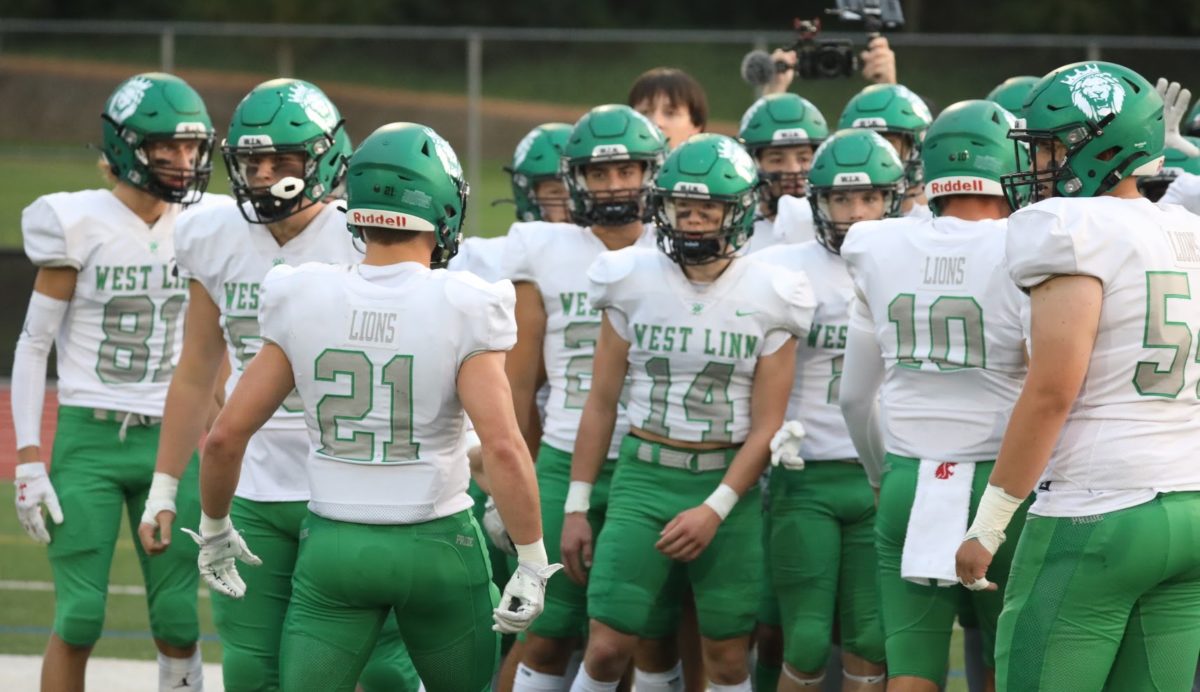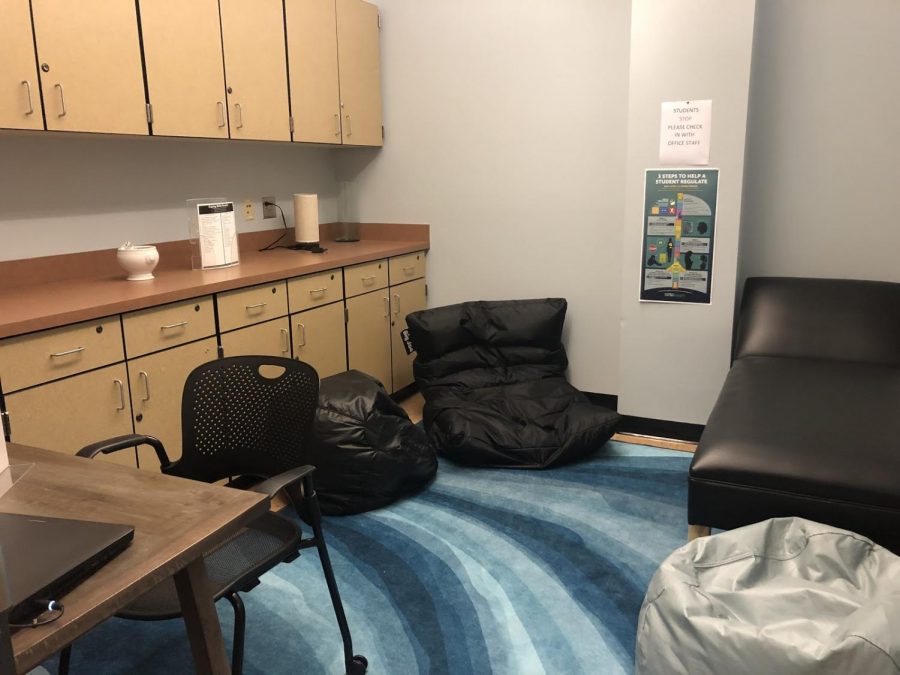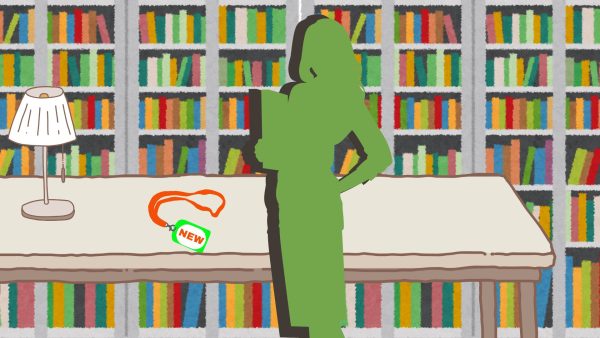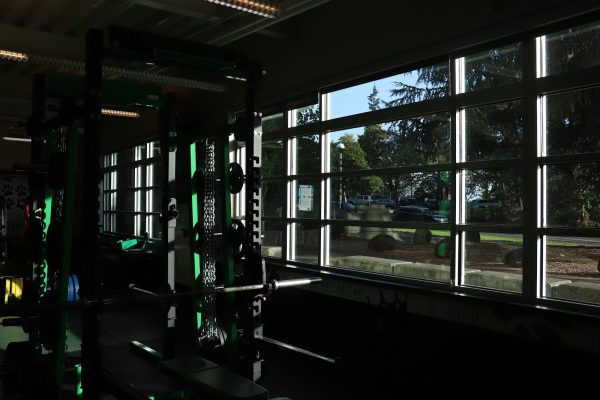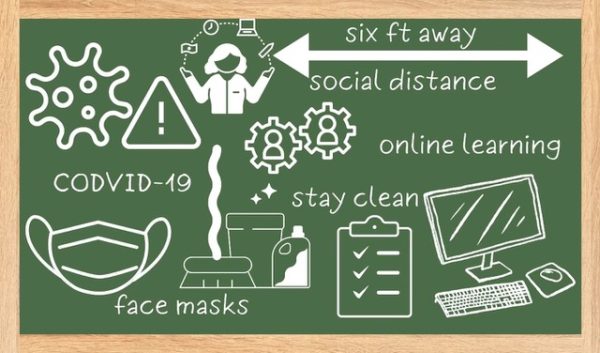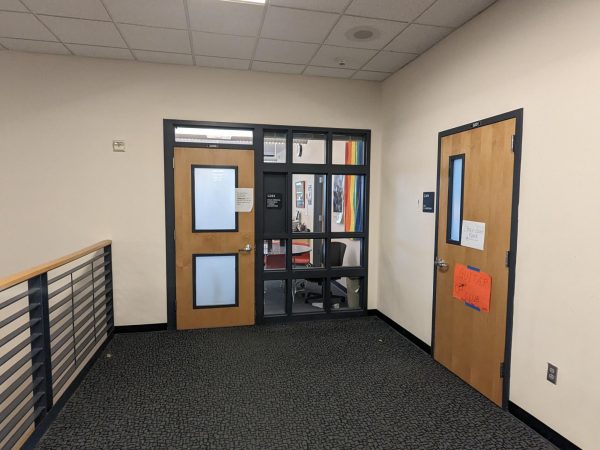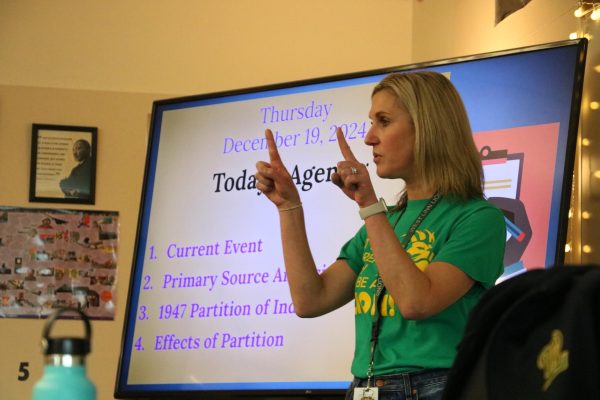What are the counselors doing for you?
In the Main Office, this is the Calm Room. Students can come here to take a break, pray, or do anything else they need to do to calm down. “We needed an additional space to help support students,” Annie Kaiser, student leadership advisor, said. Funds from the Class of 2019 helped purchase the paint and new furnishings for the room.
In the U.S., the rate of high school-aged youth considering and committing suicide continues to rise, according to Child Trends. There has been a 33% suicide increase for 15 to 19-year-old students since 2009. Out of every 100,000 high school students, ten committed suicide in 2016. More than a quarter of high school students have experienced symptoms of clinical depression and other psychiatric conditions.
However, most are not accessing support from mental health professionals, a UNSW-led survey reveals according to Medical Xpress. Counselors are an essential part of a school’s community. They are there to be seen as a support for students, not just academically, but emotionally and socially as well.
What About the Counselors Education?
Our school has five counselors: Greg Bean, Kimberly Gwin, Carly Halverson, Michelle Olson, and Krystal Toderick. All of these counselors are trained in three main areas: college career readiness, academic support and mental health.
To become a school counselor at West Linn, you must go through graduate school.“We do a lot of different types of trainings throughout our graduate school program,”Carly Halverson, freshman counselor, said. “So, we go to an undergrad, then we go to a graduate school program to get a degree in K through 12 school counseling. Within graduate school, we learned a lot of different techniques and strategies around supporting mental health, academics and college and behavior.”
Counselors do not stop there. They continue their learning as the years go on. “We [the counselors] are continuous learners, we have professional development all the time that we go to,” Halverson said. “We continue our education by taking classes.”
College Preparation vs. Mental Support
High school is when many students start seriously thinking about what they want to do with their lives. According to the Bureau of Labor Statistics, “[It was] reported that 69.7 percent of students who graduated high school in 2016 were enrolled in college.” The college readiness program has proven to help encourage students to aim for higher education.
Although some may think that it overwhelms the academic and mental support counselors should provide. “The training across the board (academic, mental health and career support) is relatively equal. It might appear on the outside to families that we do a lot more College and Career support. But the reality is most of our social, emotional, mental health support happens in our offices in a more confidential setting.” Halverson said.
As members of West Linn’s community, we may hear more about the things the school does for career support because they host many parent nights and college information to students and their families. Mental health is in “more kind of confidential settings, we’re doing a lot of mental health support too, and helping families and students.” Halverson said.
Suicide Prevention
“There has been suicide training for years,” Halverson said, “And we have different types of training [for mental health].” One program Halverson discussed was Assist training. “We have Assist training which is like the main training for anybody in the building that is an adult who wants to be trained in how to talk to a student who’s feeling suicidal and how to support that student and how to come up with a plan to support that student,” She said.
Another program is QPR, question persuade referral. “That’s another type of training that we offer through the school for other individuals in the building who are not yet trained in assist…it’s like a mini version of how to help a student who or anybody who’s feeling suicidal.” Many staff members are trained with either of these programs. The counselors and a “majority” of the staff in the main office, some administrators, teachers, and support specialists are trained.
Something new this year that the school is implementing is Sources of Strengths. 80 students selected from all grade levels were chosen for this role in West Linn High School. “The goal of sources of strength is to create a culture of positive messaging to help students engage in recognizing their strengths,” Halverson said. “And then also aims towards suicide prevention.”
Sources of Strength are student mentors taught ways to help students who are feeling depressed or suicidal. There are multiple groups that focus on different areas to spread awareness. There is the art/display group, broadcasting group, social media group and more. The art/display group is currently working on putting up posters to put up around the school. They are also designing buttons and t-shirts. “The goal of that is with positive messaging campaigns, [it] spreads…and that you’re aware about it and now it will become like a school wide thing,” Halverson said. Sources of Strength is also raising money to fund their program for suicide prevention.
The Calm Room
Another new thing that is in our school this year is the Calm Room. This is a room in the main office where students can come in to spend time to relieve some emotional or mental stress. “We needed an additional space to help support students who come to the Counseling Office/Health Room in physical or mental/emotional distress,” Annie Kaiser, the Student Leadership Advisor, said. The room is open to all students and can stay for a maximum of 30 minutes.
“When the ASB officers and I were at the Oregon Association of Student Councils Fall Conference last November, we led a sharing session on mental health. All of the students in the session discussed the sharp increase in mental health struggles they were seeing at their schools, and one school shared information about a quiet room they had created for their students to access during the school day,” Kaiser said. Hearing about another school that had a quiet room, this inspired the Main Office to build their own. So, a few weeks before the school year started Ms. Riddle, Ms. Scheid, Ms. Bloom, Mr. Hanson, and Ms. Kaiser, went to work and built the room.
“We’re investing in people to support kids.”
“We’re not buying computers. We’re investing in people to support kids,” Gregory Neuman, principal, said. Last year, the state of Oregon added $1,000,000,000 to funding education. 40% percent of this will be “going into three main buckets” as Neuman puts it. “40% goes into reducing class sizes, providing more mental health support, counseling, things like that. We’re not buying textbooks with it,” He said.
There may even be talk of adding one or two more counselors in that department. Currently, there is a ratio of 1:500 for counselors to students. “[There] are asks to address some of these mental health issues and making sure that all students are being taken care of,” Neuman said. “Not only academically, but emotionally as well. Those are my aspiration goals.” With the extra money, hopefully students will be given extra care.
Your donation will support the student journalists of West Linn High School. Your contribution will allow us to continue to produce quality content by purchasing equipment, software, and continuing to host our website on School Newspapers Online (SNO).

A walk with her dog and a shower wakes up Morgan Johnson, freshman, right away every morning at 6 a.m. She then will move on to breakfast and making her...



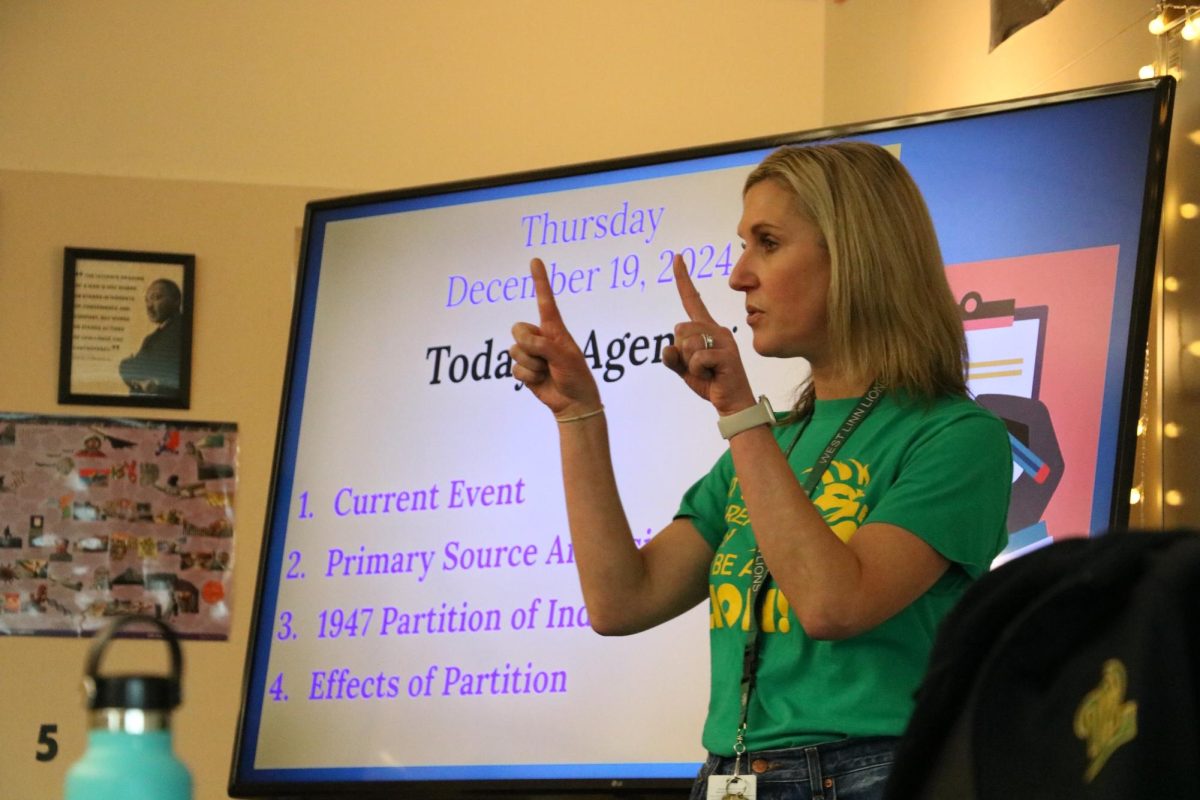






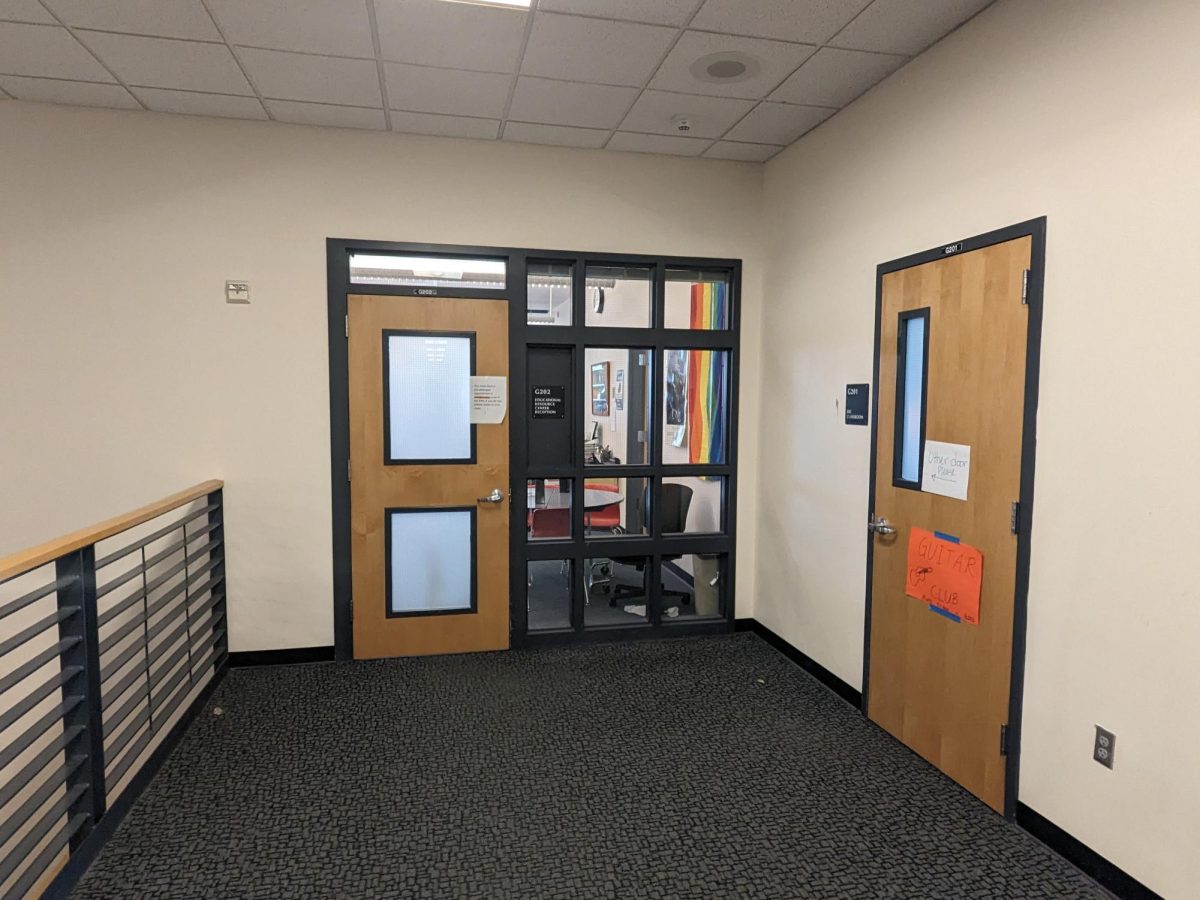












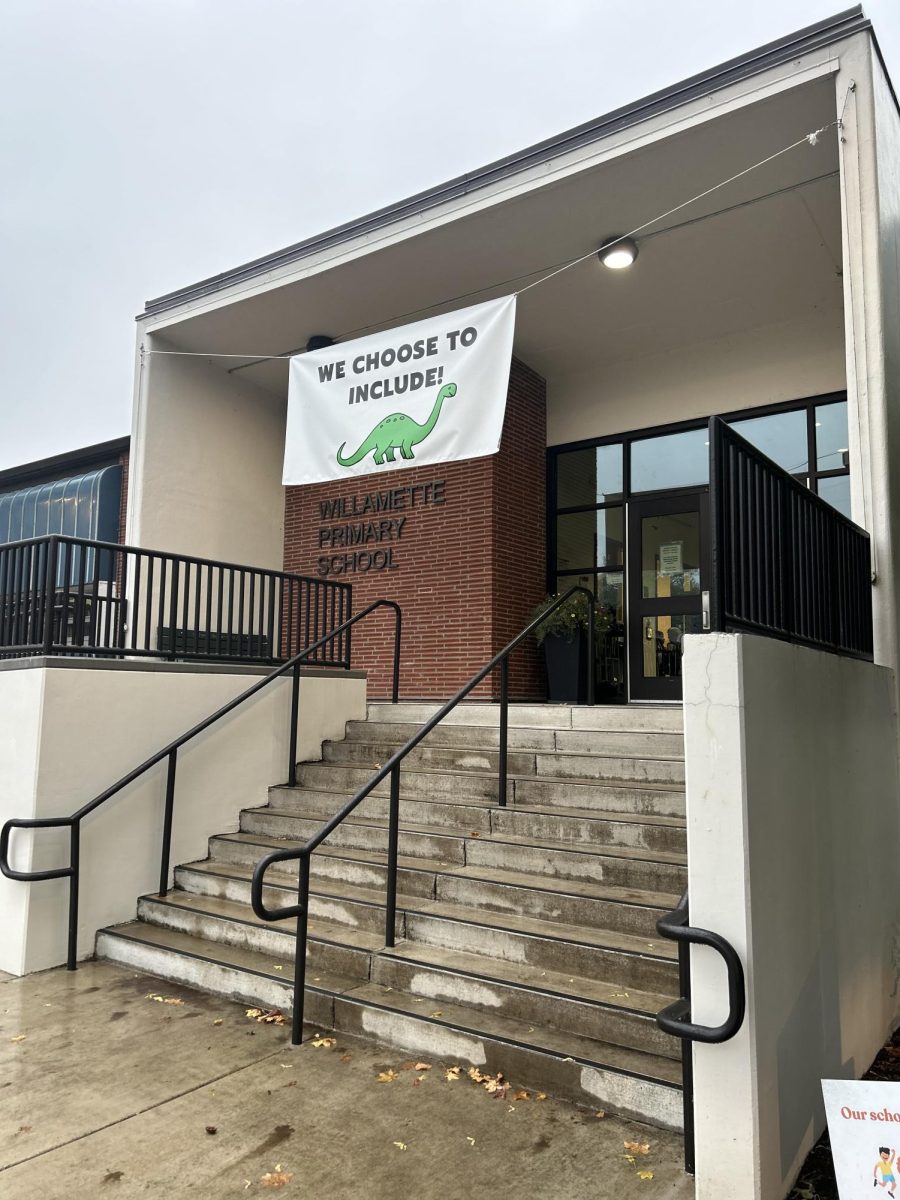
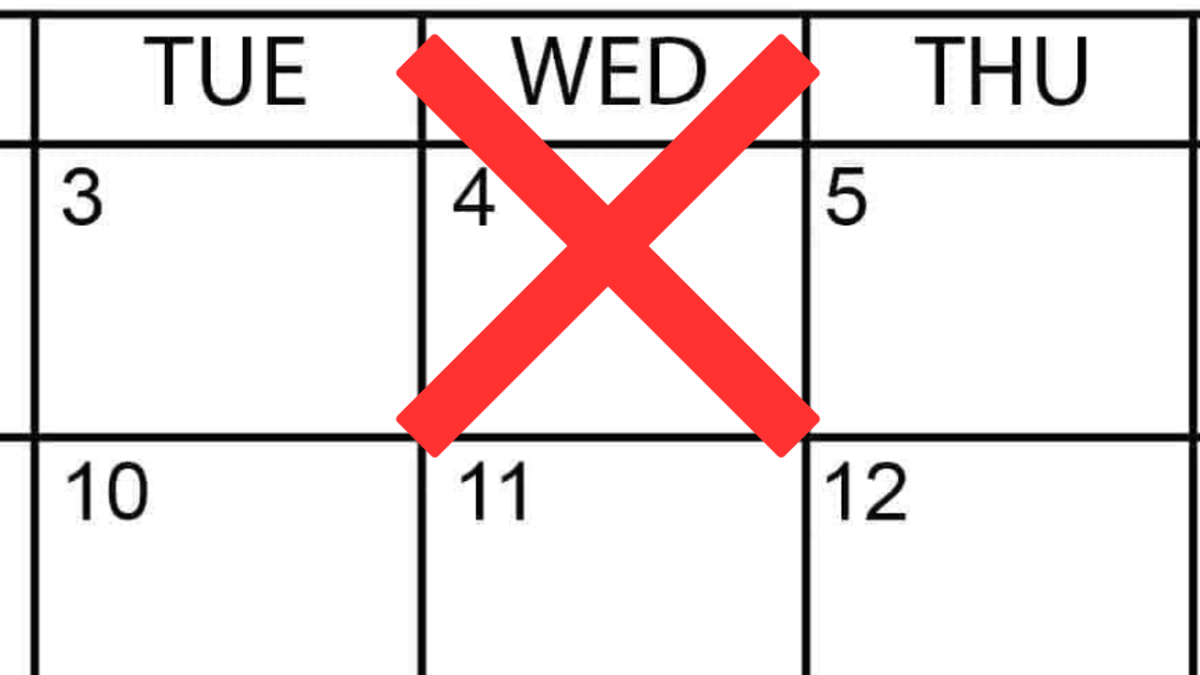

















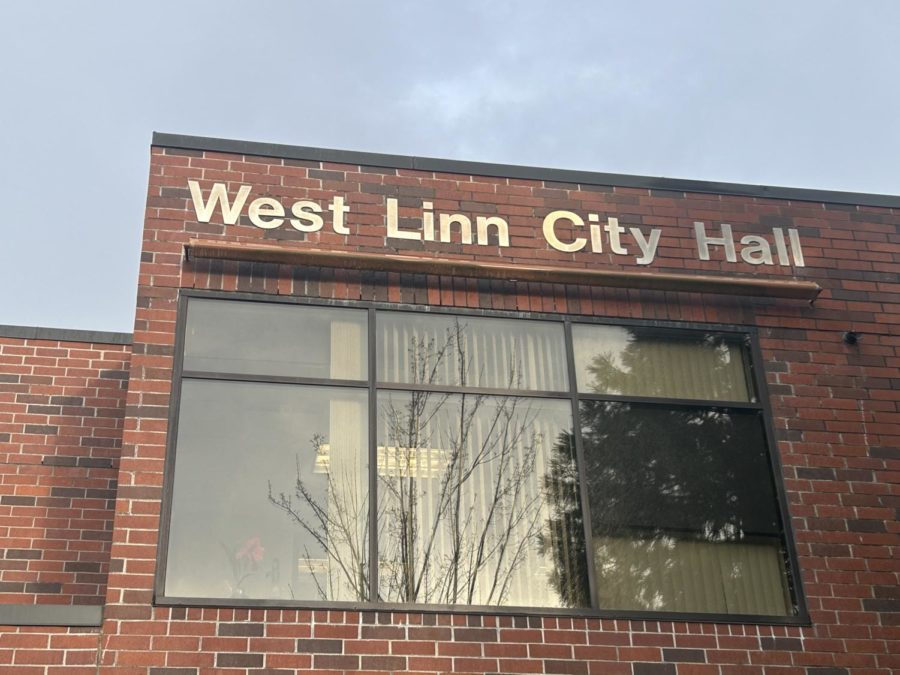





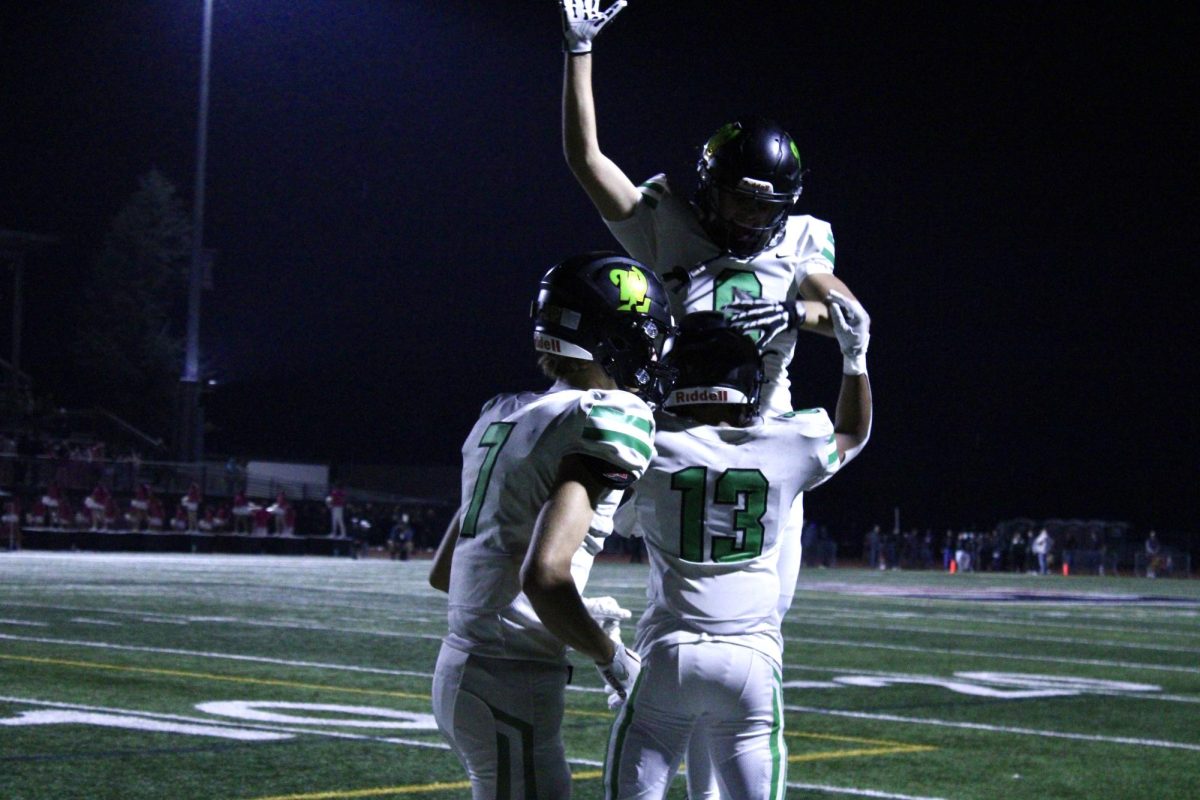




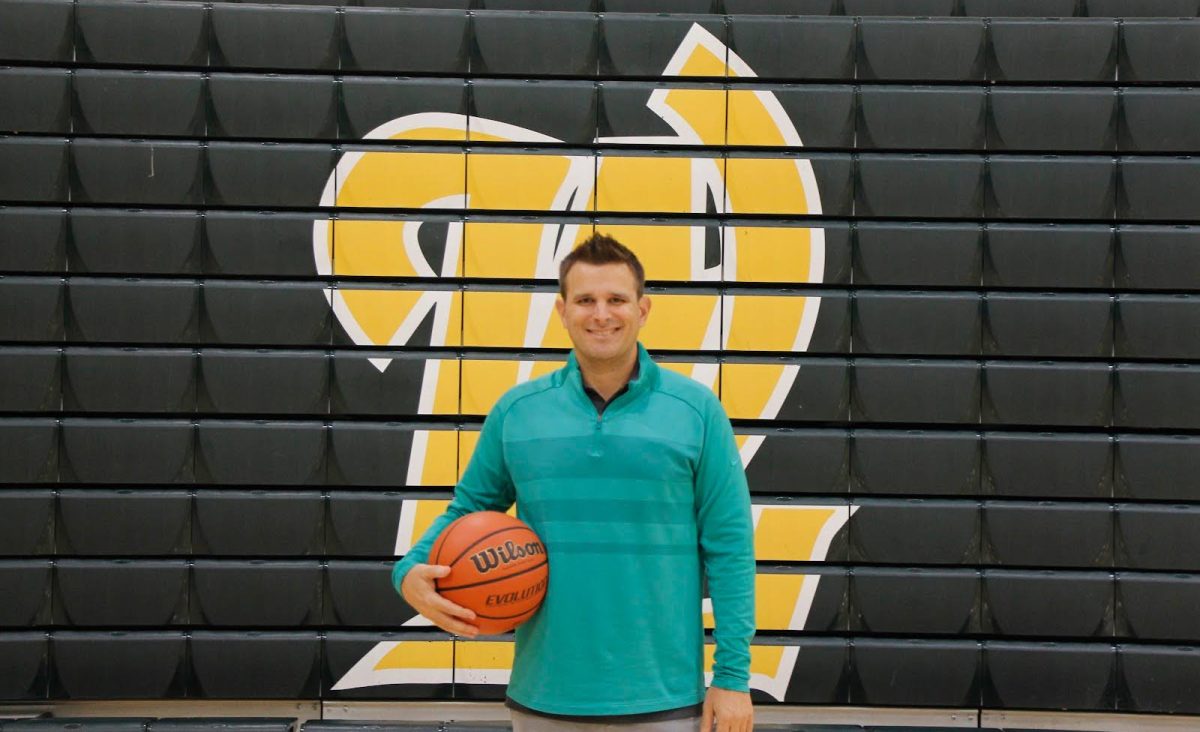
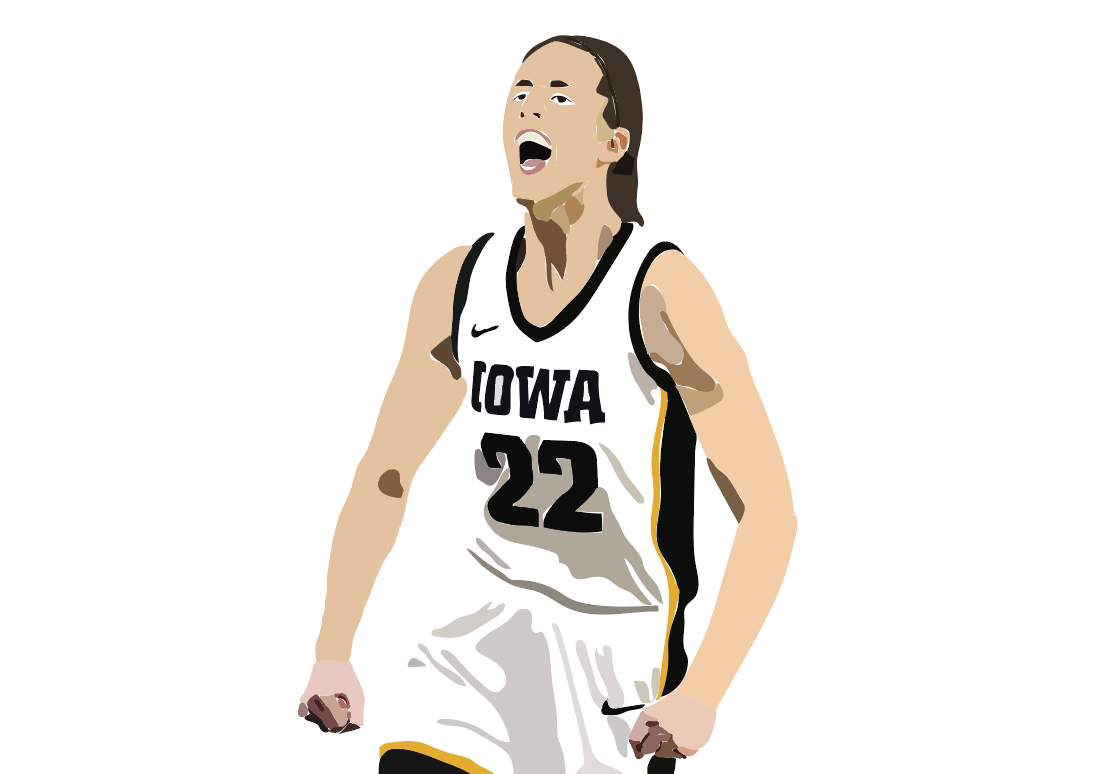
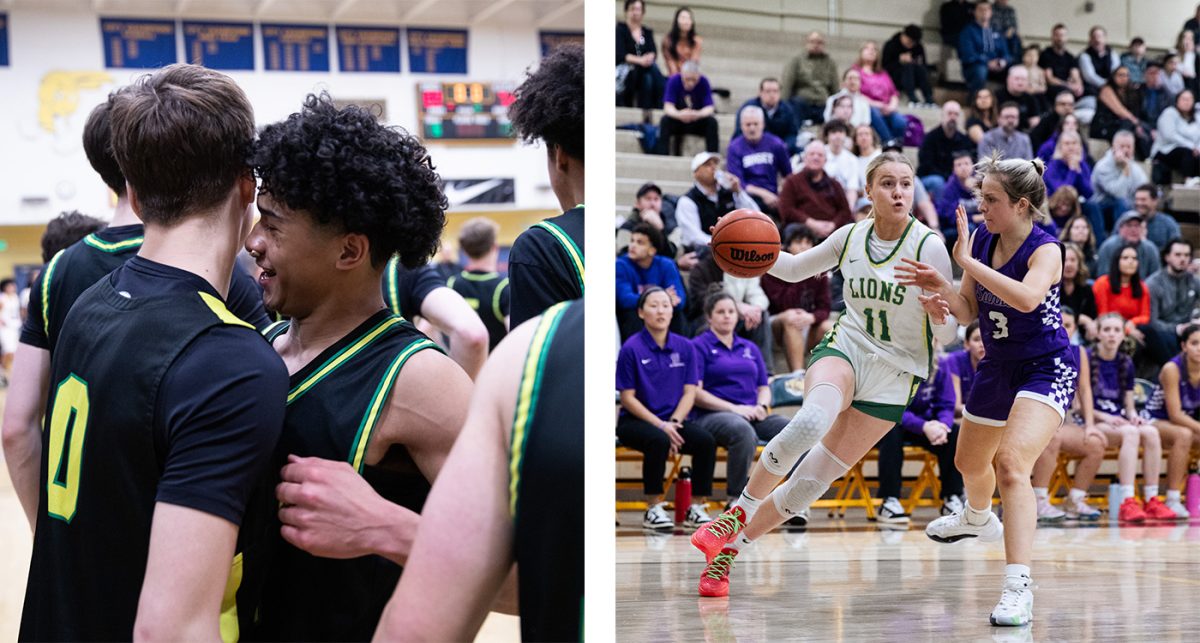
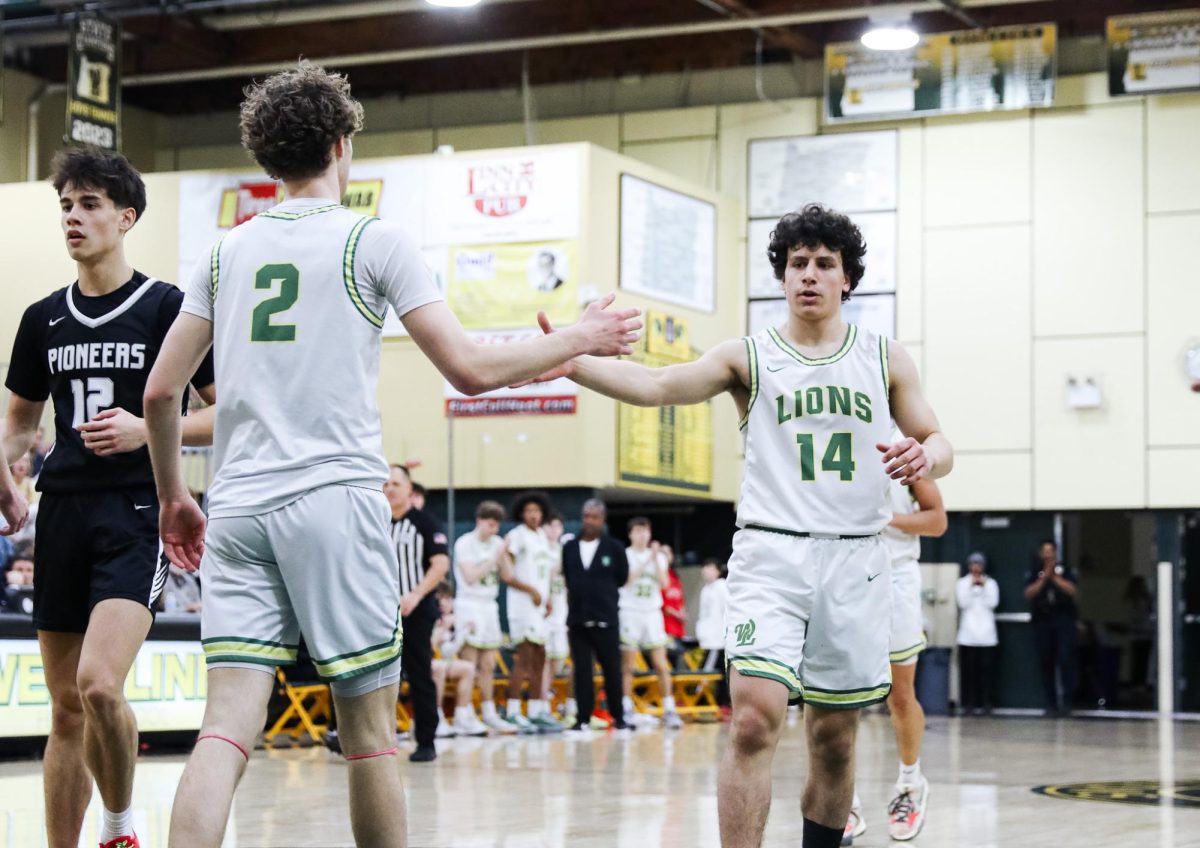
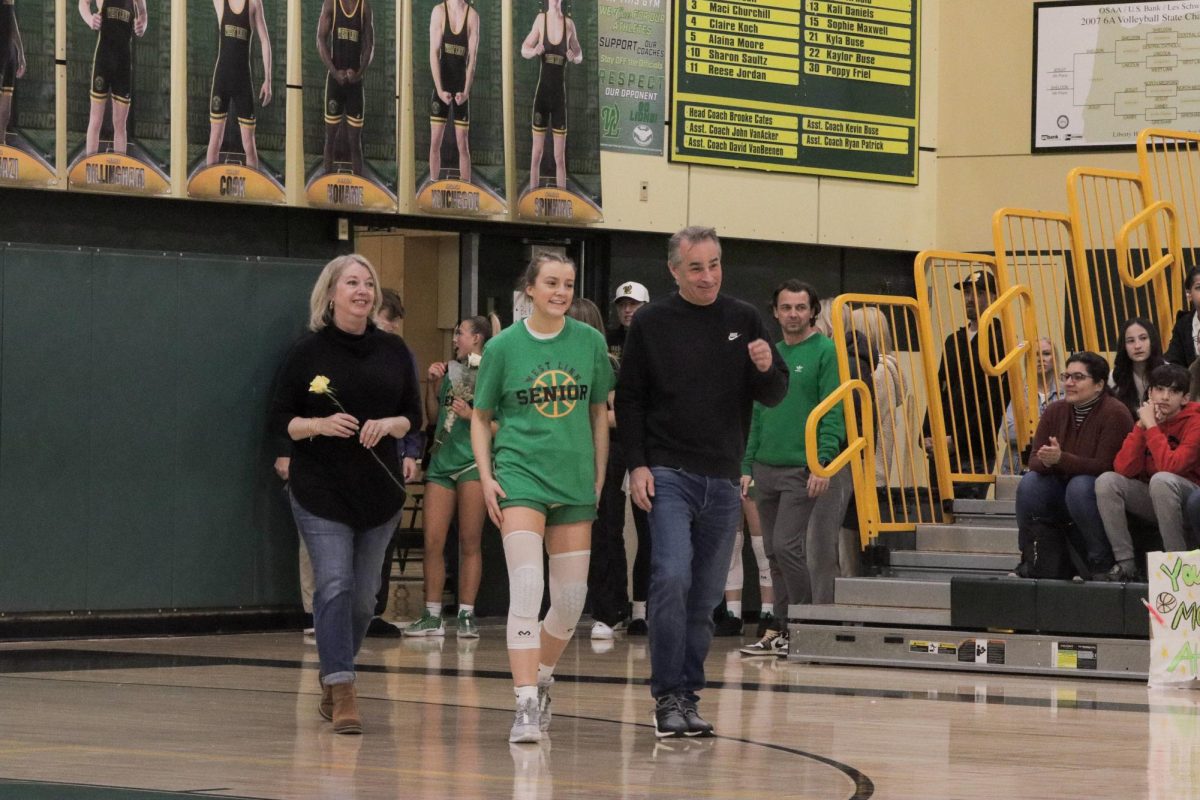
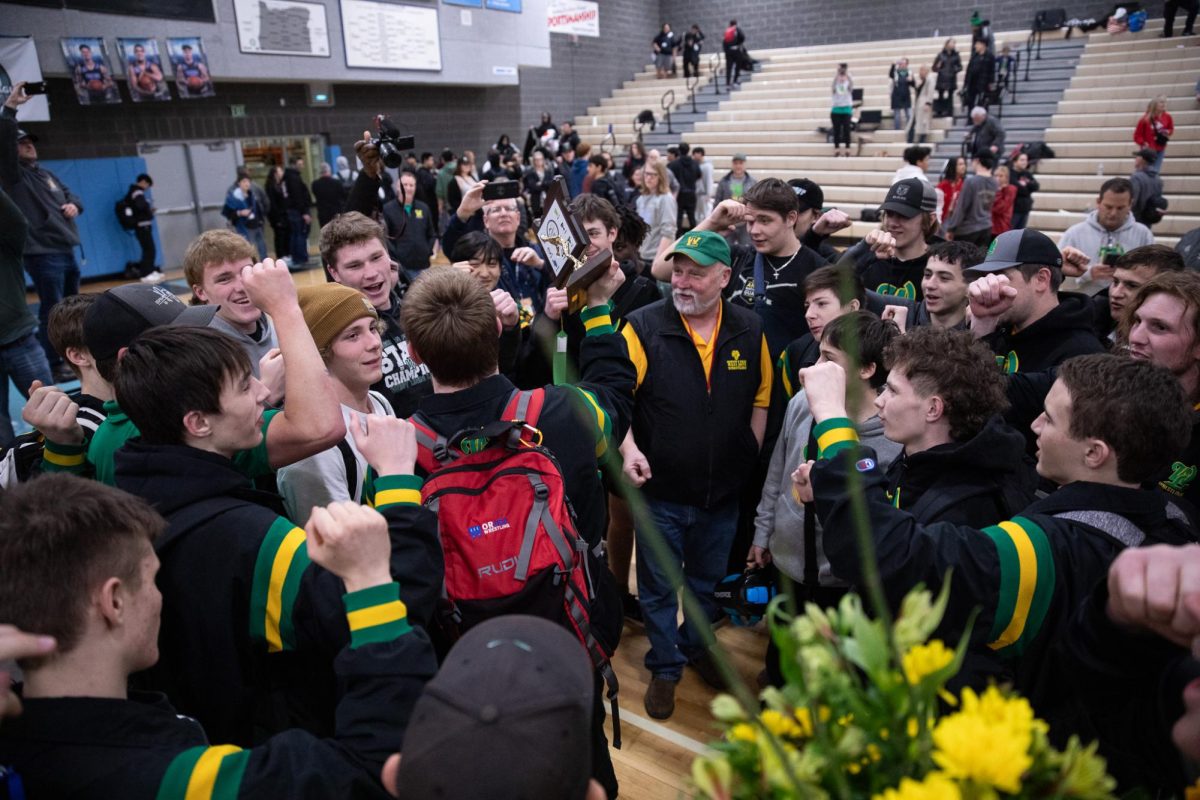


![At the bottom of the third inning, the Lions are still scoreless. Rowe stands at home plate, preparing to bat, while Vandenbrink stands off to the side as the next batter up. Despite having the bases loaded, the team was unable to score any runs. “It’s just the beginning of the season. We’re just going to be playing out best by June, [and] that’s where champions are,” Rowe said.](https://wlhsnow.com/wp-content/uploads/2024/03/IMG_3077-1200x900.jpg)



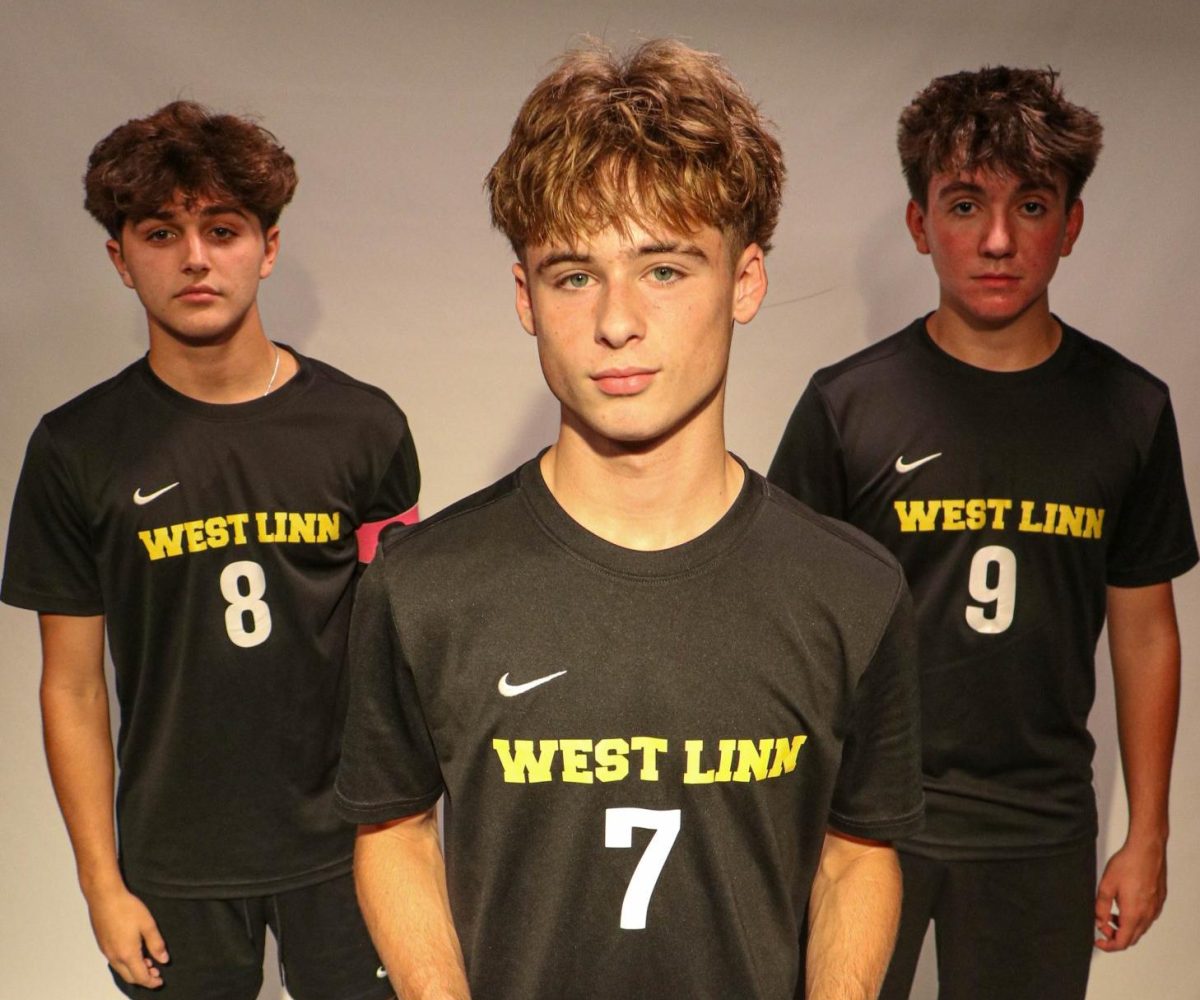

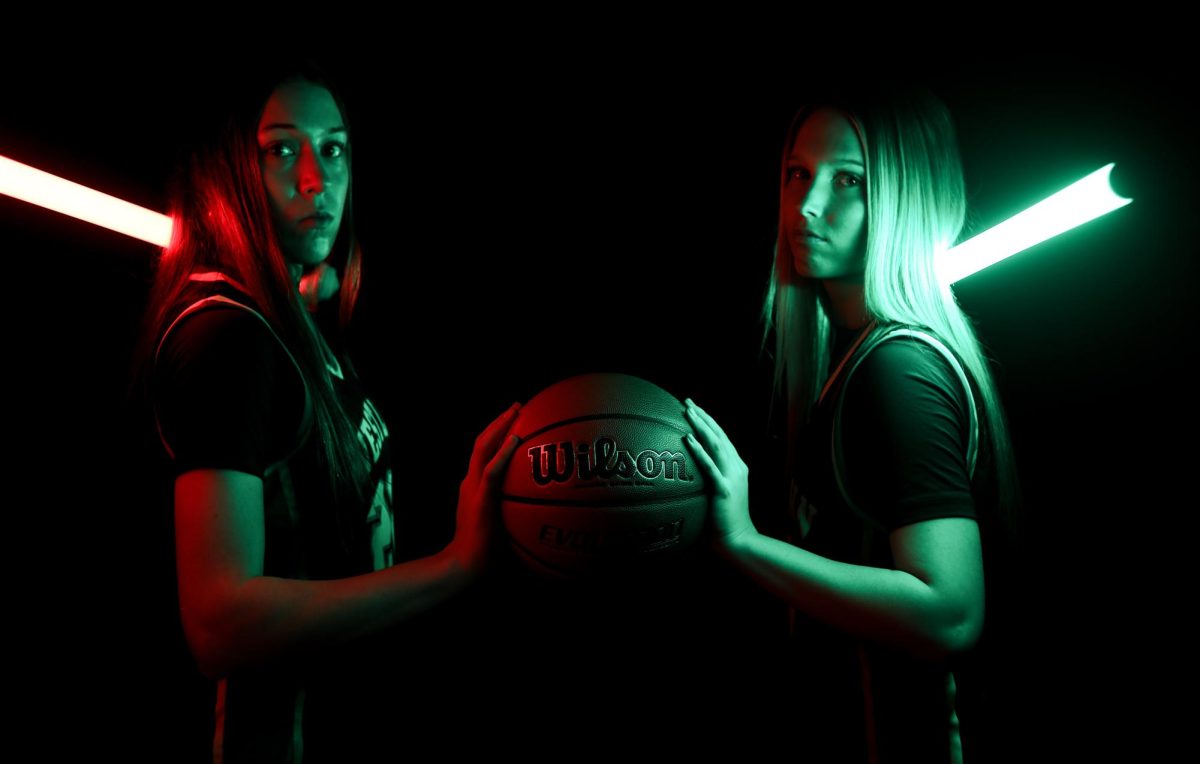
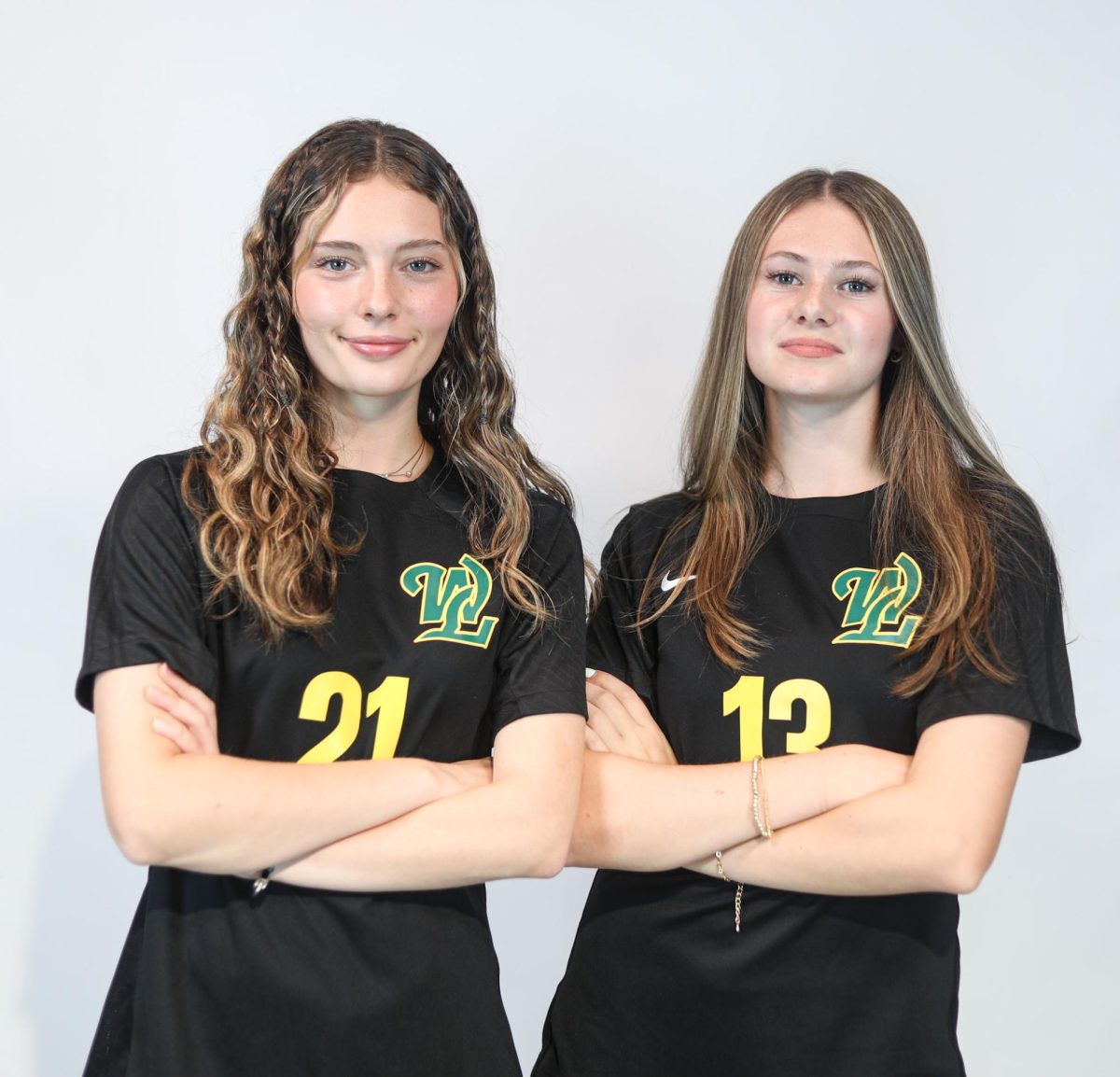
































![All smiles. The group poses for a photo with last year’s book, “This is Our House,” along with their award for third Best in Show. Meikle, who was an Editor-in-Chief for the yearbook last year as well, holds both and stands at the center of the group. “That was an amazing feeling, going and grabbing the third place award,” Meikle said. “All of it paid off. I cried so much over that book, being able to receive [the award] was one of the highlights of my high school career, it was like the coolest thing ever.”](https://wlhsnow.com/wp-content/uploads/2024/11/8bookpose_philly-1200x800.jpg)




